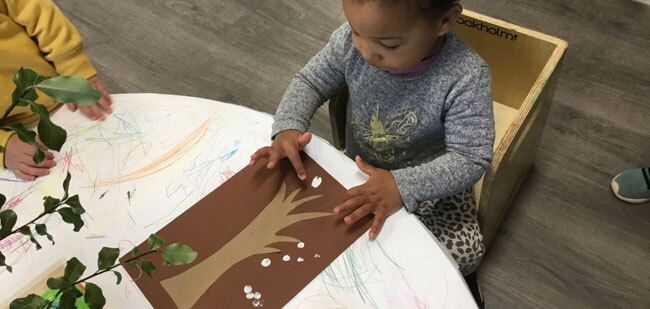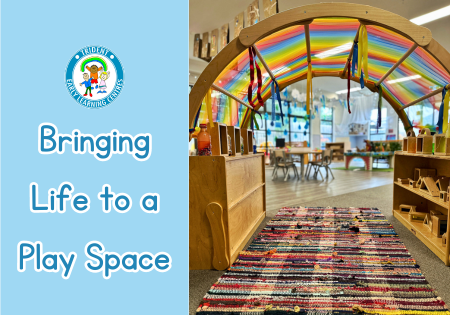*Written by Alyssa Wright – Media and Marketing Manager at Trident Early Learning.*
Have you seen those photos of early childhood services with picture-perfect play spaces and an abundance of resources? Generally these are taken by professional photographers at a time when children are not present (or well before the childcare centre even opens!).
Whilst these photos may be an illusion, having beautiful, inviting play spaces and learning environments is completely achievable. All you need are some bright ideas, passion, team collaboration, and a small collection of resources that you can swap in and out.
Great learning environments are often referred to as "the third teacher" because children’s engagement and interaction with their environment helps them construct their own learning.
What Can I Add to a Set-Up?
Some ideas of resources that you can add to set-ups and play spaces are:
- Baskets
- Boxes
- Mirrors
- Crockery
- Jars
- Natural materials, e.g. wood, hessian, rocks, sticks, pinecones, logs
- Wooden, metal or glass bowls, trays and servingware
- Different materials and textiles, e.g. cover the table with a tablecloth or drape a curtain over the whole play space
- Vases of flowers (real or artificial)
- Plants (real or artificial)
- Placemats or boards
- Multicultural resources, e.g. artwork, textiles
- Artwork
- Lighting
- Cushions and Blankets
- Signage, e.g. explaining the activity or posing a question - 'Can You Build a Tower?'
- Literacy, e.g. books, magazines, signs, posters, menus, catalogues, clipboards with paper & pencils
- Numeracy, e.g. measuring tapes, rulers, calculators, telephones, computers, scales
- Photos or pictures, e.g. photos of animals in a play space about the zoo
- Frames, e.g. frame photos, signs, pictures, posters or use as part of the activity
- Recycled materials, e.g. cardboard boxes and tubes, plastic tubs
- Loose parts, e.g. jar lids, seed pods, pegs, gumnuts, bottle caps
- Costumes and props, e.g. adding occupation costumes to a supermarket set-up
- Resources that stimulate the senses, e.g. bright sunflowers, bunch of fragrant mint or lavender, textured carpet squares, musical instruments
What Should I Consider?
When planning a play space or set-up at your childcare or kindergarten service, you might like to consider:
- The position in the room
- The positioning of furniture
- How you are defining the space, e.g. with a divider, using a rug
- The size of the space
- How many children you would like to participate, e.g. is it an activity for 2 children or 4?
- Whether you want to have chairs at the table or leave it as a standing activity
- Lighting, e.g. natural light, lamps, light ropes, light boxes
- Is it open-ended or do you have a set goal in mind?
- Developmental abilities
- Ages of children
- Cultural backgrounds
- Supervision and number of educators
- How educators will comfortably interact with children
- What level the activity will be situated at, e.g. low to the ground so children crouch or lay down, or at torso height so they can comfortably engage with it for a long period
- Is there a variety of natural and man-made resources?
- How it can be extended on, e.g. a play dough cutting activity could turn into a bakery play space by integrating it with the shop/home corner
Would You Like More Information?
- Create the Perfect Play Space - Learning Environments for Young Children
- Childcare Room Setup
- Playful Learning Spaces for Babies and Toddlers
- 10 Tips for Creating Great Play Spaces
- Trident Early Learning Pinterest - lots of great photos and ideas!
- And I highly recommend following The Curiosity Approach on Facebook!


















 info@tridentearlylearning.com.au
info@tridentearlylearning.com.au